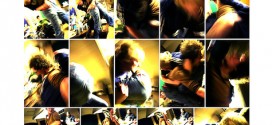 There are three main areas of ineffectiveness within most businesses. Failures of implementation and execution are common and often are the result of poor management of individual potential as well as poor teamwork.
There are three main areas of ineffectiveness within most businesses. Failures of implementation and execution are common and often are the result of poor management of individual potential as well as poor teamwork.
As inherently social creatures, we often underestimate the performance impact that poor teamwork has on our organisations. We incorrectly see the creation of teams of individuals with roles that align to business functions as being the rough extent of our responsibilities. We fail to recognise our accountabilities to ensure that our teams are fully optimised in terms of their performance potential. This applies both to within teams (intra) and between teams (inter).
When you learn the techniques and recipes for brilliant teamwork and team building activities and then start to effortlessly apply them, you will be surprised at how much time you get back. Previous attention-sapping distractions like investigating poor performance or trying to smooth-out cross team conflicts may not go away completely, but will definitely start to fade.
More importantly, a lot of creative effectiveness is unlocked. Innovation and creativity are fostered by the views and insights of different team members coming together in the more conducive environment of a good teamworking relationship. Problem solving is improved as an increased level of openness to differing opinions, beliefs and values leads to new perspectives on problematic issues. Decision making is improved through both quality and timeliness; when people work well together the right information flows faster enabling the better decisions to be made. Everyone feels more aligned and committed to making the right decision.
5 tried and tested teamwork and team building recipes:
- Try walking in my shoes: because of our inherent social tendencies, our ability to think and act tribally is remarkable. Within very short periods of time feelings of ‘them and us’ can exist between teams. Regular ‘walking in my shoes’ sessions enable team member to experience what their colleagues on other teams experience as their reality. In practical terms these sessions look like planned chunks of time – a half to a full day per quarter – working in a different team and doing the parts of their jobs it is possible to engineer into the time slot/ competency set. After these sessions become a habit, as well just getting on better, individuals can far more easily model what their colleagues would think or do in different situations and then act accordingly.
- Get an enemy: using the social/ tribal tendencies mentioned in 1. to your advantage, and recognising the need for all businesses to have a mission above profit, the creation of an external enemy can align teamworking remarkably quickly as internal foes stand side-by-side against the external threats’. These threats can be articulated competitors – Richard Branson’s Virgin Group mainly enters new products, services and markets where it sees a dominant player abusing its position. Or they can be more like societal ‘wrongs’: it’s not about becoming a not for profit with a social agenda. It’s about having something bigger than money and profit to aim for.
- Do something different: select – or better still get your different teams to collaborate and select – one or more projects that are cross-agenda/ team or are at more of a hygiene level and affect everyone. Examples would be the introduction of flexible working or a cost-saving drive. Form cross-functional teams – preferably from a balance of skills and passion for the project – and get them to work together to deliver the project’s objectives. Have a leadership sponsor, but not a senior team leader. Get them to lead their own progress and engagement communications with colleagues.
- Apply some stress testing: the problem with a lot of teamwork and team building exercises is that they’re too soft. Primal emotions like fear push people together and strip-away a lot of the niceties, politics and restraint that often exist in the workplace and are reflected in scenario-based team building exercises in corporate hotels away days. Ok – so you probably can’t drop your under-performing teams Bear Grylls-style in the middle of the Sahara Desert, but with fear in mind think hard about alternatives. Hire some actors to role play prison guards and set up a man hunt for a day – last team captured wins. Get even more extreme with a night in a haunted house: the key is to stimulate their emotions past the norm, and then make them work together towards a common objective.
- Get back to basics: unfortunately the mental profile that people have created of their colleagues is often built layer-on-layer of misunderstanding, mis-truths and incorrect associations and pattern-matching. Doris in accounts probably wasn’t a swotty library-lover at high school and doesn’t spend her weekends knitting tea cosies. Tony from tech support may listen to heavy metal and fight robots in his spare time, but he might also enjoy the same TV Makeover show that you do and have a wicked sense of humour. As leader, you need to work out how to breakdown these false perceptions and get people back to basics. Zappos.com is said to randomly show the picture of a colleague and you have to type their name to log-in to the system. A snippet/fact about them/ their lives is also shown. Invest in and promote a colleague-run learning & development programme. Give your team time to prepare presentations on the things they are passionate about and then free up 20 minute slots on a weekly basis, or more frequently, promote them internally and allow people to sign-up and attend. There is nothing like knowing a person’s passions to bond with them at a very human level.
As discussed above, when you learn the techniques and recipes for brilliant teamwork and team building activities and then start to effortlessly apply them, you will be surprised at how much time you get back. Interested in more?: sign up for further articles below if you’re not already a subscriber:
 Constant Mentor Goal Setting & Interventions for Leaders
Constant Mentor Goal Setting & Interventions for Leaders




